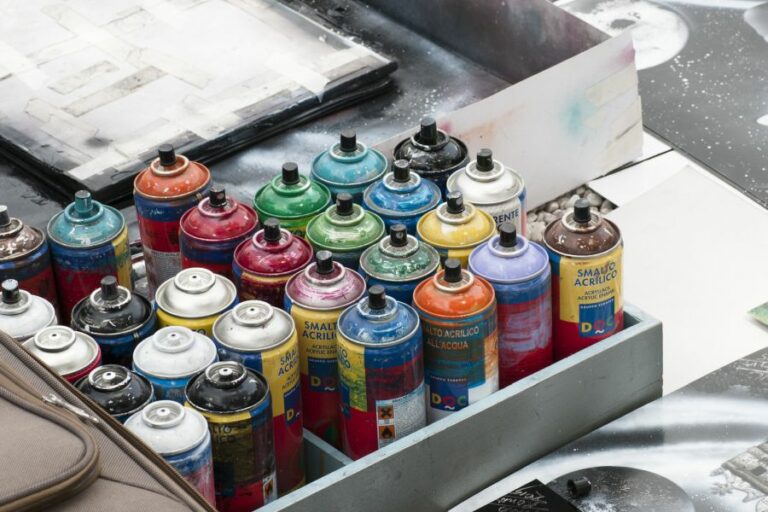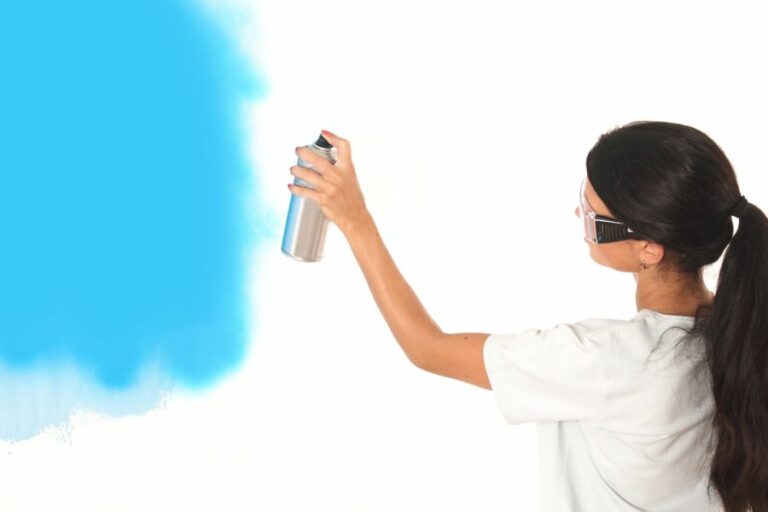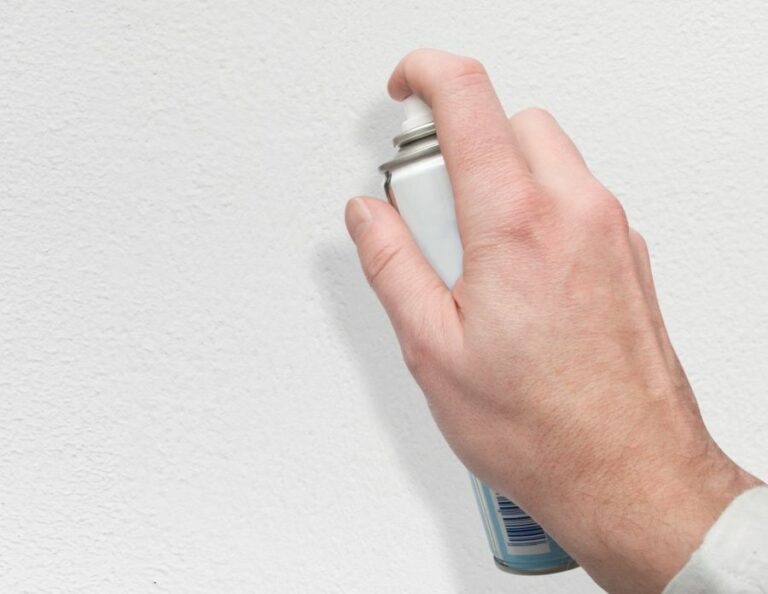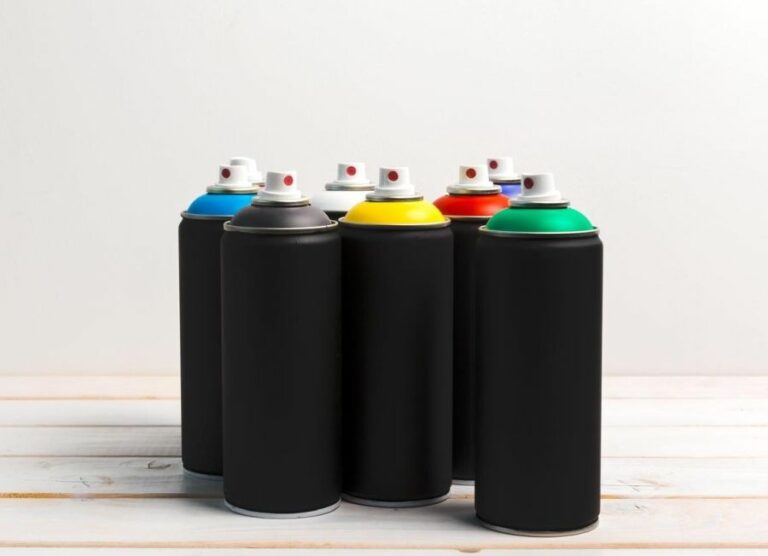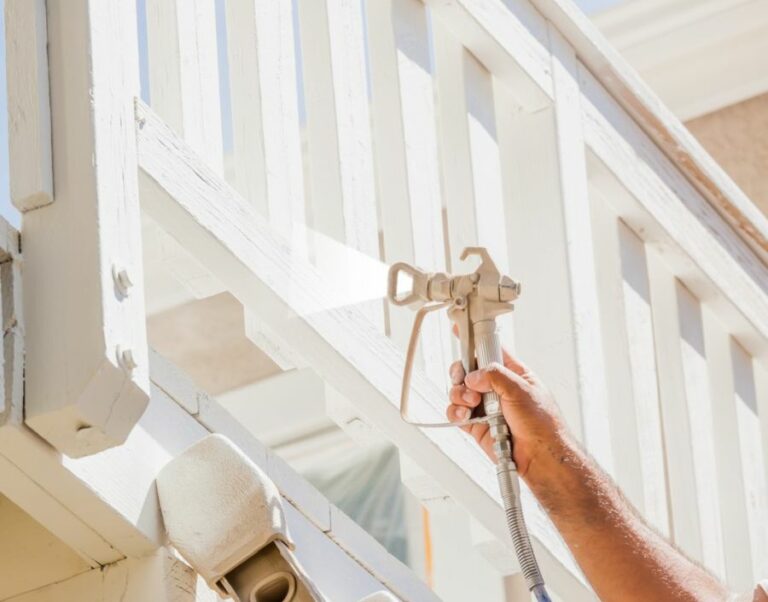Erase Spray Paint: Indoor & Outdoor Surfaces. What Pros Say
Dealing with unwanted spray paint, whether it’s indoor or outdoor, can be quite a challenge. Fret not, as we have the perfect solutions to help you erase spray paint from various surfaces. Our expert tips and methods will guide you through the process, ensuring your space returns to its pristine condition. Say goodbye to those stubborn spray paint marks, and let’s bring back the beauty of your surfaces!
Erase spray paint: indoor & outdoor surfaces:
To remove spray paint from indoor and outdoor surfaces, use the appropriate tools and techniques. For indoor walls, try dish soap and warm water, rubbing alcohol, or paint thinner. On wood surfaces, consider sandpaper, acetone, or a paint stripper. Use pressure washing, graffiti remover, or trisodium phosphate (TSP) for outdoor concrete. Apply paint thinner or acetone, fine steel wool, or sandblasting on metal surfaces as a last resort. Act quickly and test chemicals on a small area before using.

Tired of unsightly graffiti on your indoor and outdoor surfaces? Discover the best techniques, products, and DIY solutions to effectively erase spray paint from various surfaces. Read on to get rid of pesky paint problems in no time!
Contents
- 1 Eliminate Spray Paint: Indoor & Outdoor Materials
- 2 Safely Remove Spray Paint Without Harming Base Coat
- 3 Can a Magic Eraser Clean Off Spray Paint?
- 4 Effectiveness of Isopropyl Alcohol on Spray Paint Removal
- 5 Graffiti Removal Methods for Drywall Surfaces
Eliminate Spray Paint: Indoor & Outdoor Materials
Removing spray paint from various surfaces can be a challenging task, but it is not impossible. With the right tools and techniques, you can successfully erase spray paint from both indoor and outdoor surfaces.
• Erase Spray Paint from Indoor Surfaces
– On Walls
Removing spray paint from indoor walls requires a delicate approach to avoid further damage to the surface. The following methods can be effective in removing spray paint from walls:
- Dish Soap and Warm Water: Mix a small amount of dish soap with warm water. Use a soft sponge or cloth to gently scrub the painted area, continuously rinsing it in the solution. This method works best for latex-based paints.
- Rubbing Alcohol: Test a small, inconspicuous area of the wall first to ensure it does not damage the surface. If it’s safe to use, dampen a cloth or sponge with rubbing alcohol and gently scrub the paint off the wall.
- Paint Thinner: Make sure the room is well-ventilated, then apply a small amount of paint thinner to a cloth and gently rub the painted area until the paint loosens. Once the paint is removed, clean the area with mild soap and water.
– On Wood
When dealing with wood surfaces, it is important to take care not to damage the wood while removing the spray paint. These methods can help remove spray paint from wood surfaces:
- Sandpaper: Start with coarse-grit sandpaper (such as 60 or 80-grit) until most of the paint is removed, then gradually use finer-grit sandpaper to smooth the surface.
- Acetone: Apply a small amount of acetone to a clean cloth and gently rub the painted area, making sure not to damage the wood. Acetone can be particularly effective on oil-based paints.
- Paint Stripper: Use a paint stripper specifically designed for wood surfaces, following the product instructions carefully. Scrape off the softened paint with a plastic scraper, taking caution not to damage the wood surface.
• Erase Spray Paint from Outdoor Surfaces
– On Concrete
Removing spray paint from outdoor concrete surfaces can be more difficult due to the porous nature of concrete. However, with the right techniques, it can be done:
- Pressure Washing: Use a pressure washer with at least 3,000 PSI of pressure, and aim the nozzle at a 45-degree angle to the surface, gradually moving closer to the surface as needed. This technique is most effective when the paint is still fresh.
- Graffiti Remover: A commercial graffiti remover specifically designed for use on concrete can help break down the paint, making it easier to remove. Follow the product instructions and use a stiff-bristle brush to scrub the paint away.
- Trisodium Phosphate (TSP): A solution of TSP and water can effectively remove spray paint from concrete. Apply the solution to the surface, scrub with a stiff-bristle brush, and rinse with water. Always wear gloves and eye protection when working with TSP.
– On Metal
Removing spray paint from metal surfaces often requires more aggressive methods to ensure the paint is completely removed. The following approaches can be helpful:
- Paint Thinner or Acetone: Apply a small amount of paint thinner or acetone to a clean cloth and gently rub the painted area, taking care not to damage the metal surface underneath.
- Fine Steel Wool: Use a fine-grade steel wool pad to gently scrape the paint off the metal surface. Always work in the direction of the metal grain to avoid scratches.
- Sandblasting: If all other methods fail, sandblasting may be necessary to remove spray paint from metal surfaces. However, it should be noted that sandblasting can potentially damage the metal surface and is generally best left to professionals.
• Tips and Recommendations for Erasing Spray Paint
- Act quickly. The sooner you attempt to remove the spray paint, the easier it will be to erase.
- Test any chemical, like paint thinner or acetone, on a small or inconspicuous area before applying it to the entire surface to avoid potential damage.
- Always wear protective gear, including gloves and eye protection, when working with chemicals.
- Use a gentle touch when using abrasive materials, like sandpaper or steel wool, to avoid damaging the surface underneath the spray paint.
- Consult a professional if you’re unsure about how to effectively remove spray paint from a specific surface.
In conclusion, removing spray paint from indoor and outdoor surfaces can be a challenging task but is possible with the right tools and techniques.
Whether it’s latex or oil-based paint on walls, wood, concrete, or metal surfaces, understanding the various methods available will help you effectively erase spray paint and restore your surfaces to their original condition.
Safely Remove Spray Paint Without Harming Base Coat
• Prepare Your Workspace
Before starting the process, it is essential to prepare your workspace. Make sure you have good lighting, access to running water, and all necessary materials close at hand. It is also important to work in a well-ventilated area, as some chemicals used in the process may produce fumes.
• Gather Essential Materials
To remove spray paint without damaging the original paint, you will need the following items:
- Automotive clay bar
- Mild soap
- Water
- Microfiber cloth
- Protective gloves
- Acetone or automotive paint thinner (in some cases)
• Cleaning with a Clay Bar
A clay bar is designed to remove contaminants from the surface of your cars paint without causing any damage. By using a clay bar, you can effectively remove spray paint without scratching or hurting the original finish.
– Step 1: Prepare the Clay Bar
Break off a small piece of the clay bar and knead it in your hands until it is soft and pliable. Flatten the clay into a small disc.
– Step 2: Wash the Surface
Before using the clay bar, wash the surface of the car with mild soap and water to remove any dirt or contaminants. Make sure to rinse thoroughly and then dry with a clean microfiber cloth.
– Step 3: Clay the Surface
Spray a small amount of water in the area where the spray paint is present. Gently rub the clay bar on the surface, using back-and-forth motions.
Apply light pressure, and let the clay do the work. As the clay picks up the spray paint, you will feel the clay bar gliding more easily on the surface.
– Step 4: Check the Progress
Occasionally, check the clay bar to see if it is picking up the spray paint. If the clay is getting dirty, fold it over to reveal a clean side, and knead it again. Continue this process until the spray paint is removed.
– Step 5: Clean the Area
After successfully removing the spray paint, rinse the area with water to remove any clay residue. Dry the surface with a clean microfiber cloth.
• Using Acetone or Automotive Paint Thinner
In some cases, the spray paint may be too stubborn for a clay bar to remove. If this is the case, using acetone or automotive paint thinner can be an effective solution.
Warning: These chemicals are potent and may potentially damage the original paint. Be sure to test on a small, inconspicuous area before applying it to the entire surface.
– Step 1: Protect Yourself
Make sure to wear protective gloves when handling chemicals like acetone or paint thinner to avoid skin irritation.
– Step 2: Apply the Solvent
Moisten a clean microfiber cloth with a small amount of acetone or paint thinner. Gently dab the cloth on the spray paint, ensuring not to rub or apply too much pressure. The solvent will begin to dissolve the spray paint.
– Step 3: Monitor the Progress
Frequently check the progress of the spray paint removal. As the paint begins to dissolve, gently wipe away the residue with a clean section of the cloth. Be sure not to let the solvent sit for too long, as it may harm the original paint.
– Step 4: Rinse and Dry
Once the spray paint is removed, rinse the area with water to remove any solvent residue. Dry the surface with a clean microfiber cloth.
• Final Thoughts
Removing spray paint without damaging the original paint is essential for maintaining your car’s appearance.
By using a clay bar or acetone and paint thinner, you can effectively remove spray paint without causing harm to your car’s finish. It is important to be patient and gentle during the process to ensure the best results.
Step | Description |
|---|---|
1 | Test the cleaning solution on a small inconspicuous area. |
2 | Apply a generous amount of a paint-safe graffiti remover or rubbing alcohol to a clean cloth. |
3 | Gently rub the cloth on the spray paint, working in small sections and using a circular motion. |
4 | Wipe away the removed spray paint using a separate clean cloth. |
5 | Continue working in small sections until all spray paint is removed. |
6 | Rinse the area thoroughly with water to remove any residue from the cleaning solution. |
7 | Allow the area to dry completely before assessing if any additional cleaning is needed. |
Can a Magic Eraser Clean Off Spray Paint?
Magic erasers, or melamine foam, have become popular cleaning tools due to their effectiveness in removing marks and stains from various surfaces.
An important question that often arises is: can a magic eraser remove spray paint? In this article, we will explore the effectiveness of magic erasers in removing spray paint and discuss the best techniques to do so.
• How Does a Magic Eraser Work?
Magic erasers are made from melamine foam, which is a micro-abrasive cleaner. This means that the magic eraser works by gently scratching away at the surface it is being used on. The open-cell structure of the foam traps and removes dirt, grime, and other unwanted substances.
It is this micro-abrasive quality that allows magic erasers to remove various marks and stains from surfaces such as walls, countertops, and appliances. However, we must consider the limitations of magic erasers when it comes to dealing with spray paint.
• Magic Erasers and Spray Paint Removal
As a general rule, magic erasers can be effective at removing small amounts of spray paint. However, their effectiveness will greatly depend on several factors, including the type of surface, the amount of paint, and the duration the paint has been on the surface.
– Surface Type
Depending on the surface, magic erasers may not be ideal for removing spray paint. Hard, non-porous surfaces (such as glass or metal) are more likely to benefit from the use of melamine foam, but other surfaces (such as wood and porous plastics) may suffer damage if not treated with caution.
I recommend testing the magic eraser on an inconspicuous area of the surface to ensure it does not cause damage or remove the original finish.
– Amount of Paint
If the spray paint is a small amount or a thin layer, there is a higher chance that the magic eraser will be effective in removing it. However, if you are working with a large area or a thick layer of paint, the magic eraser may not be enough to take care of the job effectively.
In such instances, using a paint remover or graffiti removal product alongside the magic eraser may provide better results. These products can be found at your local hardware store or online.
– Time Since Paint Application
The longer the paint has been on a surface, the more challenging it is to remove. If you’re dealing with spray paint that is fresh and has not yet fully dried, you may have a better chance of removing it with a magic eraser.
On the other hand, once the paint has dried and cured, it will be much harder to remove with a simple magic eraser. In these cases, using a paint thinner or remover in conjunction with the magic eraser may be necessary to achieve the desired results.
• Tips for Using a Magic Eraser to Remove Spray Paint
Here are some tips on how to use a magic eraser effectively for removing spray paint from various surfaces:
- Wet the magic eraser: Dampening the magic eraser with water will make it more effective in removing spray paint. Be sure not to overly saturate the eraser, as this may cause it to break down quickly.
- Apply gentle pressure: Start by gently rubbing the magic eraser on the affected area using back-and-forth motions. Applying too much pressure may damage the surface or cause the foam to deteriorate quickly.
- Rinse and repeat: Continuously rinse the magic eraser with water to remove the paint particles and refresh the melamine foam. Repeat the process until the spray paint is removed.
- Clean the area afterward: Once the spray paint has been removed, clean the area with a mild soap and water solution to remove any remaining residue.
• Conclusion
In conclusion, a magic eraser can be effective at removing small amounts of spray paint from hard, non-porous surfaces.
However, its efficacy will depend on factors such as the type of surface, the amount of paint, and how long the paint has been on the surface. It is important to use caution and test the magic eraser on an inconspicuous area before attempting to remove the paint.
In some cases, additional products such as paint remover or graffiti removal products may be necessary to achieve the desired results.
Effectiveness of Isopropyl Alcohol on Spray Paint Removal
Isopropyl alcohol, also known as rubbing alcohol, is a versatile solvent and household cleaning product with many uses. One common question that arises is: can isopropyl alcohol effectively remove spray paint?
• Isopropyl Alcohol as a Paint Remover
The effectiveness of isopropyl alcohol in removing spray paint depends on multiple factors, including the type of paint, the surface on which it’s applied, and the paint’s age.
Generally, isopropyl alcohol is effective in removing fresh spray paint, particularly when applied on non-porous surfaces such as glass or metal. However, its efficacy decreases when dealing with dried or cured paint or porous surfaces, like wood or concrete.
Isopropyl alcohol is a popular option for paint removal because it poses fewer risks compared to more potent solvents such as acetone, lacquer thinner, or turpentine.
Additionally, since isopropyl alcohol evaporates quickly and leaves a minimal residue, it is a convenient choice for many DIY paint removal projects.
– How to Remove Spray Paint Using Isopropyl Alcohol
If you decide to use isopropyl alcohol to remove spray paint, follow these steps for effective and safe application:
- Test the surface: Before applying isopropyl alcohol, perform a spot test on a small inconspicuous area to ensure it won’t damage the underlying surface or the finish.
- Apply the alcohol: Pour a small amount of isopropyl alcohol onto a clean, lint-free cloth or a cotton ball. Make sure the cloth is not soaking wet but damp enough to rub the paint off.
- Rub the affected area: Gently rub the cloth with isopropyl alcohol on the spray paint, applying consistent pressure. Do not scrub harshly, as it may damage the surface or cause it to scratch.
- Repeat: Depending on the amount and type of spray paint, you may need to apply isopropyl alcohol several times. As the paint dissolves and the cloth becomes dirty, switch to a clean cloth to avoid spreading the paint.
- Clean and dry: Once the paint is removed, clean the surface with a clean cloth dampened with water to remove any residue. Finish by drying the area with a dry cloth or paper towel.
– Precautions When Using Isopropyl Alcohol
While isopropyl alcohol is a relatively safe solvent, you should be mindful of the following precautions:
- Use in a well-ventilated area to avoid inhaling the fumes.
- Wear gloves to protect your skin from the solvent and avoid prolonged exposure.
- Store isopropyl alcohol away from heat sources, sparks, or open flames, as it is flammable.
- Be cautious when using isopropyl alcohol on plastic surfaces, as it may cause discoloration, melting, or cracking.
• Alternate Solutions
If isopropyl alcohol isn’t effective in removing spray paint or if it is not recommended for your surface, consider exploring alternative solutions:
– Soapy Water
For non-porous surfaces like glass or metal, soapy water can be an effective solution for removing fresh spray paint. Combine warm water with a mild dish detergent, and use a soft sponge or cloth to gently rub the painted area.
– Paint Thinner or Acetone
For more stubborn paint removal, stronger solvents such as paint thinner or acetone can be used. However, these solvents are more aggressive and should be used with caution, as they may cause damage to certain surfaces. Always perform a spot test before using these solvents.
– Graffiti Remover
For spray paint on porous surfaces like concrete or brick, specialized graffiti remover products are available. These products, such as Safe ‘n Easy Graffiti Remover, are formulated to penetrate and break down spray paint, making it easier to remove.
– Sanding or Scrubbing
In some cases, vigorous sanding or scrubbing with a stiff brush may be necessary to remove spray paint. Be cautious when using these methods, as they can damage the underlying surface.
• In Conclusion
While isopropyl alcohol can effectively remove fresh spray paint from non-porous surfaces, its effectiveness decreases with dried or cured paint and porous surfaces. Following the steps and precautions outlined above should help facilitate a successful paint removal process.
However, don’t hesitate to explore alternative solvents or cleaning methods if isopropyl alcohol doesn’t yield the desired results.
Graffiti Removal Methods for Drywall Surfaces
Graffiti can be a serious problem for property owners. Whether it is a public building or residential property, removing graffiti from drywall can be a challenging task. Drywall is a porous material, meaning it absorbs paint easily, making it difficult to remove without damaging the surface.
• Assess the Damage & Gather Materials
Before you start the graffiti removal process, it is crucial to assess the extent of the damage and gather the necessary materials. Put on protective gear such as gloves, goggles, and a mask to protect yourself from any potentially harmful chemicals or dust.
You will need the following materials:
- Plastic scraper or putty knife
- Clean cloth or sponge
- Warm water
- Dish soap
- Paint thinner or graffiti remover
- Primer
- Paint
– Select a Graffiti Removal Method
There are three main techniques for removing graffiti from drywall:
- Washing with warm water and dish soap
- Using a paint thinner or graffiti remover
- Painting over the graffiti
The method chosen will depend on the type and extent of the graffiti, as well as the condition of the drywall. We will discuss each of these techniques in detail below.
• Washing with Warm Water and Dish Soap
For lighter or smaller instances of graffiti, washing the area with warm water and dish soap may be sufficient.
- Mix a few drops of dish soap in a bucket of warm water, creating a soapy solution.
- Wet a clean cloth or sponge in the soapy solution and gently rub it onto the graffiti in a circular motion.
- Rinse the cloth or sponge and repeat the process until the graffiti is removed or significantly faded.
- Once the area is clean, allow it to dry completely.
• Using a Paint Thinner or Graffiti Remover
For more persistent or extensive graffiti, a paint thinner or specialized graffiti remover may be necessary.
- Test the paint thinner or graffiti remover on a small, inconspicuous area of the drywall to ensure it will not cause damage.
- Carefully apply the paint thinner or graffiti remover to the graffiti using a clean cloth, sponge or plastic scraper. Always follow the manufacturer’s instructions and safety guidelines.
- Allow the product to sit for the recommended amount of time, usually a few minutes to an hour.
- Gently scrub the area with a clean cloth or sponge, working in a circular motion. Be careful not to apply too much pressure, which may cause damage to the drywall.
- Rinse the area with warm water and a clean cloth to remove any residue.
- Allow the area to dry completely. If necessary, repeat the process until the graffiti is removed or significantly faded.
Note: When using a paint thinner or graffiti remover, work in a well-ventilated area and take appropriate safety precautions. It is always a good idea to consult a professional or seek advice from your local Paint and Decorating Retailers Association (PDRA) member store for specific product recommendations.
• Painting Over the Graffiti
If neither washing nor using a paint thinner or graffiti remover is successful, you may need to resort to painting over the graffiti. Follow these steps:
- Prep the area by sanding any remaining graffiti or rough spots on the drywall with fine-grit sandpaper.
- Apply a high-quality primer to the area, allowing it to dry according to the manufacturer’s instructions. A primer provides a clean base and can help prevent any remaining graffiti from bleeding through the new paint.
- Apply a paint color that matches the existing wall color using a brush or roller. Allow the first coat to dry and evaluate coverage; apply additional coats as needed.
- Clean up any leftover materials and properly dispose of them according to local regulations.
• Conclusion
Removing graffiti from drywall can be a challenging task but is not impossible. Utilize the appropriate methods and exercise patience throughout the process.
In some instances, you may need to seek professional help from a licensed and experienced painting contractor. By taking the necessary steps, you can effectively restore your drywall and erase unwanted graffiti.
Step | Description |
|---|---|
1 | Put on protective gloves and eyewear. |
2 | Take a clean, white cloth and dampen it with rubbing alcohol or acetone. |
3 | Gently dab the cloth on the graffiti, being careful not to damage the drywall surface. |
4 | If the graffiti is not coming off, you can try using a commercial graffiti remover. Follow the instructions on the product’s label. |
5 | Once the graffiti is removed, you might need to repair any damage and repaint the drywall. Use a primer specifically designed for covering stains and marks before applying the final coat of paint. |

